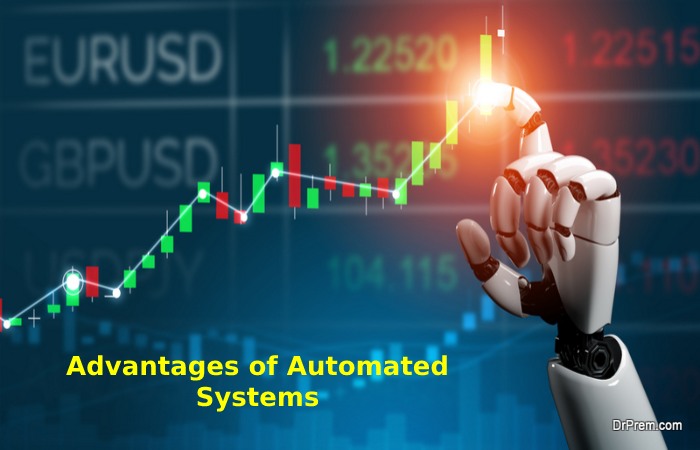Table of Contents
What is an Automated Trading System?
Automated trading system, also recognize as mechanical trading systems, algorithmic trading, automated trading, or systems trading, allow traders to set specific rules for trade entries and exits that, once schedule, can be executed automatically from a computer. In fact, about 75% of stocks traded on US exchanges come from automated trading systems.
Traders and investors can convert exact entry, exit, and money organization rules into automated trading systems that allow computers to execute and screen trades. One of the main benefits of automating strategies is that trading becomes a little more exciting as trades are execute automatically once criteria are met.
Advantages of Automated Systems

There is a long list of benefits to having a computer to monitor the markets for trading opportunities and execute trades, including:
Minimize Emotions
Automated trading systems minimize feelings throughout the trading process. By controlling their emotions, traders generally find it easier to stick to the plan. Since trade orders are automatically executed once the trading rules are met, traders cannot doubt or question the trade. Automated trading can help traders who are afraid to pull the trigger and curb those who tend to over-trade, buying and selling at every perceived opportunity.
Counter-Proof
Backtesting applies trading guidelines to historical market data to control the idea’s viability. When designing an automated trading system, all laws should be absolute without room for interpretation. The computer can’t guess, and you must tell it exactly what to do. Traders can test these specific rules against historical data before risking money on live trades. Extensive testing allows traders to evaluate and refine a trading idea and determine system expectations, i.e., the average amount a trader can expect to earn (or lose) per risk unit.
Maintain Discipline
Since trading rules are define, and trade execution is automated, discipline is maintain even in volatile markets. The field is often lost due to emotional factors such as the fear of losing or the desire to gain a little more profit from a trade. Automated trading helps maintain discipline as the trading plan is closely follow. In addition, “pilot error” is minimize. B. If an order to buy 100 shares was not mistakenly arrive as a command to trade one thousand bonds.
One of the significant challenges in trading is planning the trade and planning the trade. Even when a trading plan has the potential to be profitable, traders who ignore the rules disrupt the expectations the system would have had. Of course, no trading plan wins 100% of the time. After all, losses are part of the game. However, losses can be psychologically traumatic, so a trader who loses two or three consecutive trades may decide to skip the next trade. If this next trade had been a winner, the trader would have already destroyed all expectations in the system. Automated trading systems let traders achieve consistency in plan trading.
Advantage
- Minimize emotional exchanges
- Allows subsequent testing
- Maintains trader discipline
- Allow multiple accounts
Disadvantages of Automated Trading
- Mechanical errors may occur
- Requires functional monitoring
- May malfunction
Drawbacks of Automated Systems
Automated trading systems have many benefits, but there are some downfalls and realities that traders must be aware of.
Mechanical Failures
The theory behind automated trading makes it sound simple to set up the software, package the rules, and watch it trade. In reality, automated trading is a classy method, but it is not foolproof. For example, depending on the trading platform, a trading order might reside on a computer, not a server. That means an order may not sent to the marketplace if an internet connection is lost. There could also be a difference between the “theoretical trades” generate by the strategy and the order entry platform component that converts them into actual trades. As a result, most traders should expect a learning curve when using automated trading systems, and it’s generally a good idea to start with small trade sizes while refining the process.
Supervision
Although it would be great to go on the computer and go out for the day, automated trading systems require monitoring. It is due to the possibility of technology failures, such as connectivity issues, power outages, computer crashes, and system quirks. In addition, an automated trading system can experience anomalies that could result in erroneous orders, missing orders, or duplicate orders. By monitoring the system, these events can also quickly identified and resolve.
Conclusion
Although attractive for various reasons, automated trading systems should not be consider a substitute for carefully execute trading. Technological failures can occur, and as such, these systems require monitoring. Server-based platforms can provide a solution for merchants who want to minimize the risks of mechanical failure. Remember, before using automated trading systems; you must have some trading experience and knowledge.
